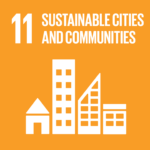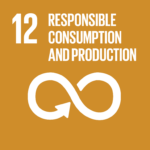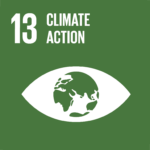Home to 75% of the world’s coral species and over 2,500 species of reef fish, the pristine archipelago in West Papua has come under threat from aggressive nickel mining operations.
Once hailed as “the last paradise on Earth,” Raja Ampat is now facing a sobering ecological crisis. Home to 75% of the world’s coral species and over 2,500 species of reef fish, the pristine archipelago in West Papua has come under threat from aggressive nickel mining operations. As sediment clouds once-crystal-clear waters and coral reefs begin to die, local communities, environmental groups, and the Indonesian government are being forced to confront a dilemma: Can green energy goals justify the destruction of a marine treasure?
RELEVANT SUSTAINABLE GOALS




The Cost of a “Green” Future
In an ironic twist, the source of destruction is nickel — a key component in electric vehicle batteries and renewable technologies. Greenpeace Indonesia’s 2025 report exposed illegal and damaging mining activities on Gag, Kawe, and Manuran Islands. Despite Indonesian laws prohibiting mining on small islands, more than 500 hectares of forest have been cleared. The resulting sediment runoff is devastating coral reefs and polluting waters relied on by fishing and tourism-dependent communities.
“The rivers and seas are no longer the same,” said one resident. “The coral sites we used to take pride in are vanishing.”
This degradation is not just environmental — it’s cultural. The region is home to Indigenous Papuan communities whose livelihoods, identity, and survival are deeply intertwined with Raja Ampat’s natural ecosystem.
Criminal Charges and Government Intervention
Public outrage reached a tipping point when a settling pond collapsed, polluting coastal waters and threatening nearby protected areas. In response, Indonesia’s Environment Minister Hanif Faisol Nurofiq issued a strong warning to PT Anugerah Surya Pratama (ASP), one of the companies operating in the region, signaling the possibility of criminal and civil charges.
“For indications of pollution and environmental damage caused, criminal law enforcement and civil lawsuits will be carried out,” Minister Nurofiq announced.
PT ASP’s permits cover 1,173 hectares on Manuran Island and 9,500 hectares on Waigeo Island — the latter a designated nature reserve. Both are part of Raja Ampat’s globally significant ecological network. The Ministry has also begun investigating three additional companies — PT Gag Nikel, PT Kawei Sejahtera Mining, and PT Mulia Raymond Perkasa — for similar violations.
Rising from the Reefs: A Social Movement Emerges
The ecological damage has not gone unnoticed. A social media campaign tagged #SaveRajaAmpat exploded in early June after Greenpeace released footage of the mining damage. One viral Instagram video amassed over 13 million views. The public reaction culminated in a dramatic protest on June 3, when Greenpeace activists and Papuan youth disrupted a mining conference in Jakarta with banners reading, “Nickel Mines Destroy Lives.”
The protest marked a pivotal moment in the national conversation. It forced both the public and policymakers to confront the complex paradox of climate solutions that cause local destruction.
Indonesia’s Law No. 1 of 2014 explicitly prioritizes the protection of small islands and coastal ecosystems. Raja Ampat, as a UNESCO Global Geopark and a world-class tourist destination, should enjoy the highest levels of environmental safeguard. The Ministry of Environment is now preparing a Strategic Environmental Assessment (KLHS) and a Regional Spatial Plan (RTRW) to reinforce these protections.
“All permits and business activities must align with ecosystem protection and applicable laws,”
Indonesia’s Environment Minister Hanif Faisol Nurofiq
Still, concerns remain. Environmentalists warn that enforcement has historically lagged behind legislation. Without firm political will, laws risk becoming empty promises as extractive industries expand.
What happens in Raja Ampat ripples far beyond Indonesia. Its reefs act as a genetic reservoir for marine life across the planet, playing a critical role in climate resilience and food security. Scientists fear that once these ecosystems are gone, they cannot be restored.
“This isn’t just about Raja Ampat,” said an ocean advocate. “It’s about the global ocean. We lose this, we lose part of Earth’s capacity to survive.”
As Indonesia races to become a major player in the global green energy supply chain, the events unfolding in Raja Ampat offer a cautionary tale: sustainability must not come at the cost of irreplaceable ecosystems. The government now stands at a crossroads — between enforcing environmental protections and expanding its resource extraction industries.
“We face multiple crises,” said a Greenpeace spokesperson. “This isn’t about choosing between economy and ecology. It’s about finding a future where both can thrive.”
Lead image courtesy of Ditras Family Via Pixels (majestic coral formations in Raja Ampat’s blue ocean, seen from a drone. Serene beauty of the open sea)
You may also be interested in :
Baliem Valley Floods Expose Papua’s Climate Crisis, Ecological Collapse, And Indigenous Struggle






